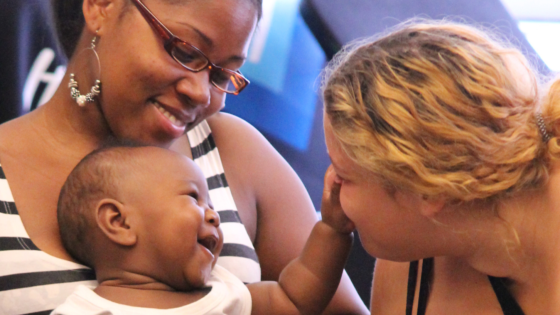As every parent knows, it takes a lot to successfully get a child from diapers to a diploma. It takes a lot of patience and love, and it takes a lot of resources, starting with a safe home, healthy food and a good school.
The sad truth is that for a parent with few resources it is difficult, if not impossible, to ensure your child can get the education you want for them. Add on the stress of making ends meet or just keeping a roof over your head, and you can have a pressurized, volatile family environment.
But it doesn’t have to be that way. The key is getting to families before families get to a crisis point. That has always been something government has struggled to get right, but now I see an exciting transformation in the way that New York City will approach its most-vulnerable families.
When I began my 13 years at the New York City Administration for Children’s Services (ACS) in 1996, it was seen simply as the agency that takes children from their parents and places them in foster care. It was overseeing almost 42,000 children in foster care at the time. Many of us there pushed for improvements in how ACS dealt with communities and families, particularly with black and Latino mothers, who were a disproportional majority of our cases.
Staff were trained to become more familiar with the communities. The agency grew and improved its supports to families before, during and after foster-care placement. It increased its outreach with community folk so that they might feel more comfortable contacting ACS.
As a result of these and other reforms, the number of children placed in foster care dropped by 76 percent to about 10,000 by 2015, while the number of children getting foster-care prevention services went from 14,000 in 1996 to 45,000 in 2015.
When I joined the Harlem Children’s Zone in 2009, I saw a proactive approach to strengthening families on a large scale. At the Baby College series, for example, we teach parents how to discipline their children without hitting. We are careful to respect the culture of our participants, where corporal punishment may have been encouraged for fear of “spoiling” a child. We also make clear that if a child is at risk we will report it, but would do so while continuing to help and care for the entire family.
Recently these two organizations came together when ACS announced a new Division of Family and Child Well-Being, and did so at the Harlem Children’s Zone Head Start program, which works with many of our most-vulnerable families.
The new division will create a better support system for under-served families. For me and many who work in the field, this change in the landscape is a dream come true. It’s a shift toward seeing poverty as a challenge to be surmounted, not a crime to be punished.
The new division will work with other organizations to not just create a stronger safety net, but to bring balance to families so they don’t need to fall. It will expand the agency’s perspective so that it looks through a “two-generation lens,” which considers what is best for both child and parent.
Through community partners, ACS will help families find free childcare, stable housing and jobs, all of which can go a long way toward stabilizing a family and avoiding a crisis or an official determination of abuse or neglect. It’s a strategy of prevention guided by empathy and compassion.
Getting this right will have a lasting impact. Studies have shown that children who enter the child-welfare system often grow to become the parents in the system. If we disrupt this cycle of generational poverty, kids can have a real shot at doing better than their parents.
The country needs to strengthen families to strengthen our children, and we need to strengthen children to strengthen our country. I have hope that this new approach at ACS will change the odds for many of the city’s most-vulnerable children and lead the way for the nation.


